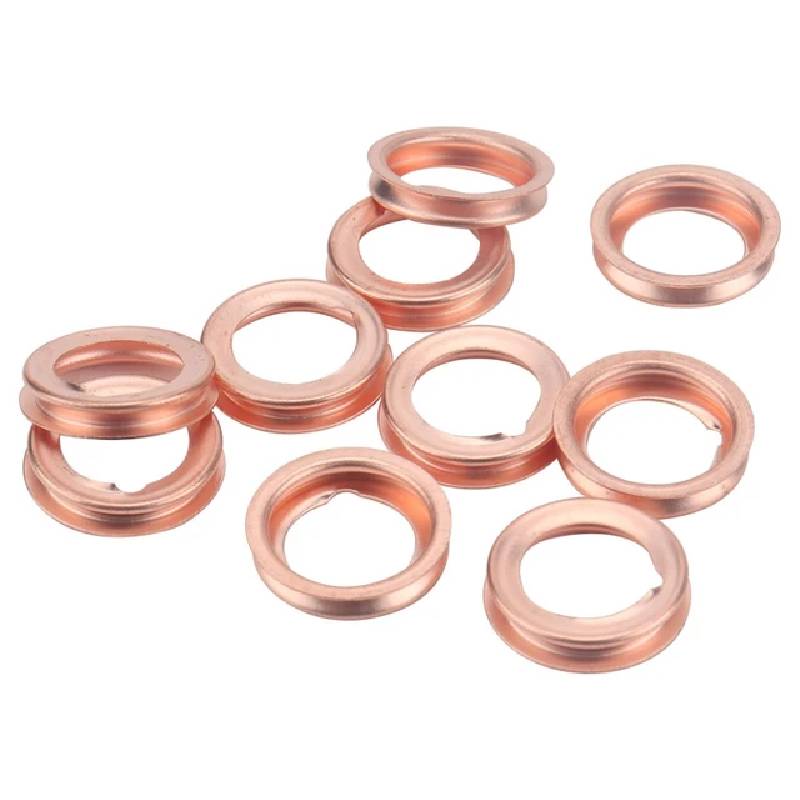Chemical Resistant O-Rings for Enhanced Durability in Harsh Environments and Applications
Understanding Chemical Resistant O-Rings A Comprehensive Guide
When selecting components for industrial applications, one crucial aspect to consider is resistance to chemicals. Among various sealing solutions, O-rings stand out for their versatility and effectiveness. Chemical resistant O-rings are engineered specifically to withstand harsh environments, making them vital in numerous industries.
What Are O-Rings?
O-rings are circular, ring-shaped seals typically made from elastomers, designed to fit into a groove and compress against two mating surfaces to create a seal. Their simple design belies a complex function – they prevent the leakage of fluids and gases, protecting machinery and ensuring operational efficiency.
The Importance of Chemical Resistance
In many industries, O-rings are exposed to aggressive substances. Oil, acid, solvents, and various chemicals can degrade standard O-ring materials, leading to failures that can be costly and dangerous. Chemical resistant O-rings mitigate these risks, providing durability and reliability in demanding applications such as
- Chemical Processing O-rings are critical in valves, pumps, and tanks that handle corrosive substances. - Automotive In vehicles, they are used in fuel systems and hydraulic systems exposed to various fluids. - Pharmaceuticals They must maintain integrity in clean and sterile environments, ensuring no contamination occurs.
Materials That Offer Chemical Resistance
The durability of an O-ring largely depends on the material it's made from. Common materials used for chemical resistant O-rings include
1. Fluorocarbon Rubber (Viton) Known for its excellent resistance to a wide range of chemicals, Viton is often used in high-temperature applications. It offers exceptional seal integrity against fuels and aggressive chemicals.
2. Ethylene Propylene Diene Monomer (EPDM) This material is highly resistant to weathering and many chemicals, making it an excellent choice for outdoor applications or where exposure to tough conditions is expected.
chemical resistant o rings

4. Nitrile Rubber (Buna-N) Commonly used for its good resistance to oils and fuels, nitrile is a cost-effective option for many automotive and industrial applications.
5. PTFE (Teflon) Not a traditional elastomer, PTFE O-rings can handle nearly all chemicals but may lack flexibility. They are often used in high-performance applications where standard materials cannot withstand the environment.
Factors to Consider When Choosing Chemical Resistant O-Rings
When selecting the appropriate O-ring, several factors must be taken into account
- Chemical Compatibility Always verify the compatibility of the O-ring material with the specific chemicals it will encounter. Various resources, including manufacturer data sheets, can aid in making this determination.
- Temperature Range Each material has its thermal limits. Knowing the operating temperature is essential for ensuring the O-ring retains its integrity and does not become brittle or excessively soft.
- Pressure Conditions High-pressure environments may require specific types of O-ring geometries or materials to maintain a proper seal.
- Application Environment Determine if the O-rings will be exposed to extreme weather, ozone, or other environmental factors, which can lead to degradation over time.
Conclusion
Chemical resistant O-rings play a critical role in countless applications across various industries. By understanding the materials available and their properties, engineers and technicians can make informed decisions to ensure the longevity and reliability of their systems. Proper selection not only enhances operational safety but also minimizes maintenance costs and downtime associated with failures. For anyone involved in the selection of sealing solutions, knowledge about chemical resistant O-rings is not just beneficial, it is essential.
-
Understanding the Front Main Engine Seal: Purpose, Maintenance, and Installation
News Jul.29,2025
-
Understanding O-Rings and Seal Rings: Types, Applications, and Custom Solutions
News Jul.29,2025
-
Understanding Crankshaft Oil Seals: Rear Seals, Pulley Seals, and Their Role in Engine Integrity
News Jul.29,2025
-
The Importance of Front and Rear Crankshaft Seals in Engine Performance and Oil Management
News Jul.29,2025
-
Crank Oil Seals: Functions, Types, and Cost Considerations in Engine Maintenance
News Jul.29,2025
-
A Comprehensive Guide to O-Rings and Seals: Types, Materials, and Global Applications
News Jul.29,2025
-
Mastering Diesel and Performance Engine Maintenance: A Guide to Critical Oil Gaskets
News Jul.28,2025
Products categories















